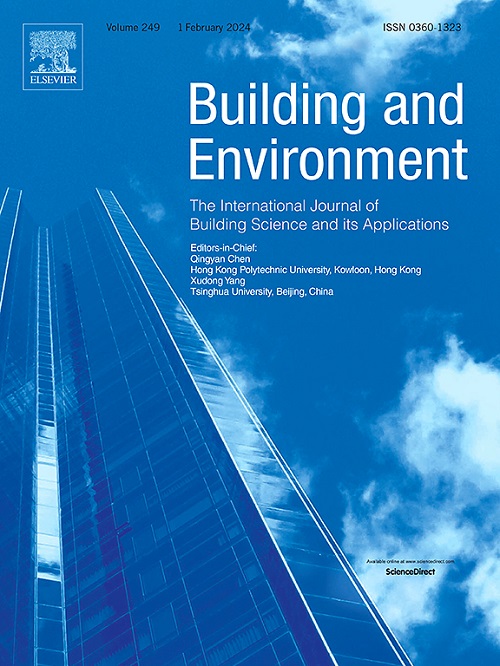Simplifying heat stress assessment: Evaluating meteorological variables as single indicators of outdoor thermal comfort in urban environments
IF 7.1
1区 工程技术
Q1 CONSTRUCTION & BUILDING TECHNOLOGY
引用次数: 0
Abstract
Biometeorological indices are used to identify outdoor thermal comfort, and require the measurement or simulation of multiple variables, which is resource-intensive. In this study, we explore the meteorological variables determining these indices and assess their role as alternative single indicators of heat stress in the outdoor urban environment. Based on model output from microscale simulations conducted within mid-latitude German cities under clear-sky summer conditions, we calculated Pearson correlation coefficients between the Universal Thermal Climate Index (UTCI) and influential meteorological variables throughout the diurnal cycle. Given the high impact of radiation on human thermal comfort, the strongest correlations during daytime occur with mean radiant temperature (MRT, 0.66 to 0.97) and incoming shortwave radiation (SWR, 0.62 to 0.92). Our study highlights the stronger surface temperature correlation (0.75 to 0.93) compared to the air temperature correlation (0.33 to 0.64), especially during daytime. During daytime, street-level exposure to SWR emerges as a more reliable indicator of thermal stress compared to air temperature under the summertime situations investigated. Our correlation analysis between UTCI, aggregated daytime SWR, and sky view factors reveals that daytime exposure of surfaces to SWR does not necessarily increase nighttime UTCI. Instead, longwave radiation (LWR) trapping plays a more dominant role in the domains we analysed. This study supports future research that utilizes machine learning to determine heat stress and outdoor human thermal comfort.
求助全文
约1分钟内获得全文
求助全文
来源期刊

Building and Environment
工程技术-工程:环境
CiteScore
12.50
自引率
23.00%
发文量
1130
审稿时长
27 days
期刊介绍:
Building and Environment, an international journal, is dedicated to publishing original research papers, comprehensive review articles, editorials, and short communications in the fields of building science, urban physics, and human interaction with the indoor and outdoor built environment. The journal emphasizes innovative technologies and knowledge verified through measurement and analysis. It covers environmental performance across various spatial scales, from cities and communities to buildings and systems, fostering collaborative, multi-disciplinary research with broader significance.
 求助内容:
求助内容: 应助结果提醒方式:
应助结果提醒方式:


